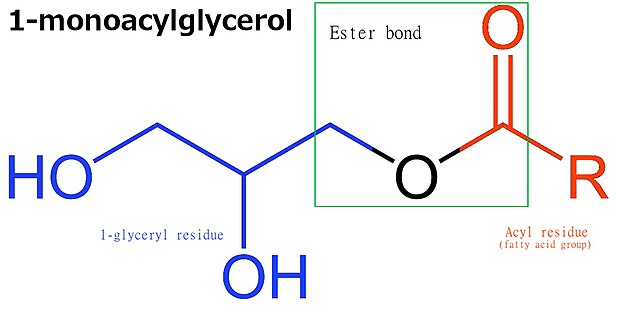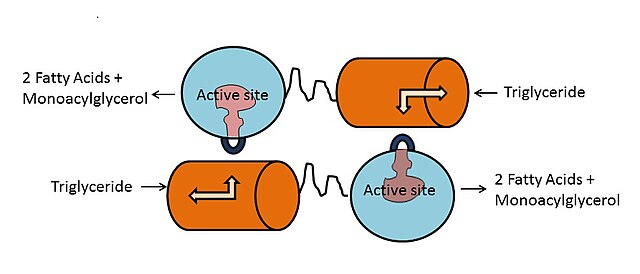Monoglycerides are a class of glycerides which are composed of a molecule of glycerol linked to a fatty acid via an ester bond. As glycerol contains both primary and secondary alcohol groups two different types of monoglycerides may be formed; 1-monoacylglycerols where the fatty acid is attached to a primary alcohol, or a 2-monoacylglycerols where the fatty acid is attached to the secondary alcohol.
Molecular structure of 1-monoacylglycerol
Molecular structure of 2-monoacylglycerol
Lipoprotein lipase (LPL) (EC 3.1.1.34, systematic name triacylglycerol acylhydrolase (lipoprotein-dependent)) is a member of the lipase gene family, which includes pancreatic lipase, hepatic lipase, and endothelial lipase. It is a water-soluble enzyme that hydrolyzes triglycerides in lipoproteins, such as those found in chylomicrons and very low-density lipoproteins (VLDL), into two free fatty acids and one monoacylglycerol molecule:triacylglycerol + H2O = diacylglycerol + a carboxylate
Image 1: The proposed LPL homodimer structure; N-terminal domains in blue, C-terminal domains in orange. Lid region blocking the active site is shown in dark blue. Triglyceride binds to the C-terminal domain and the lid region, inducing a conformation change in LPL to make the active site accessible.



